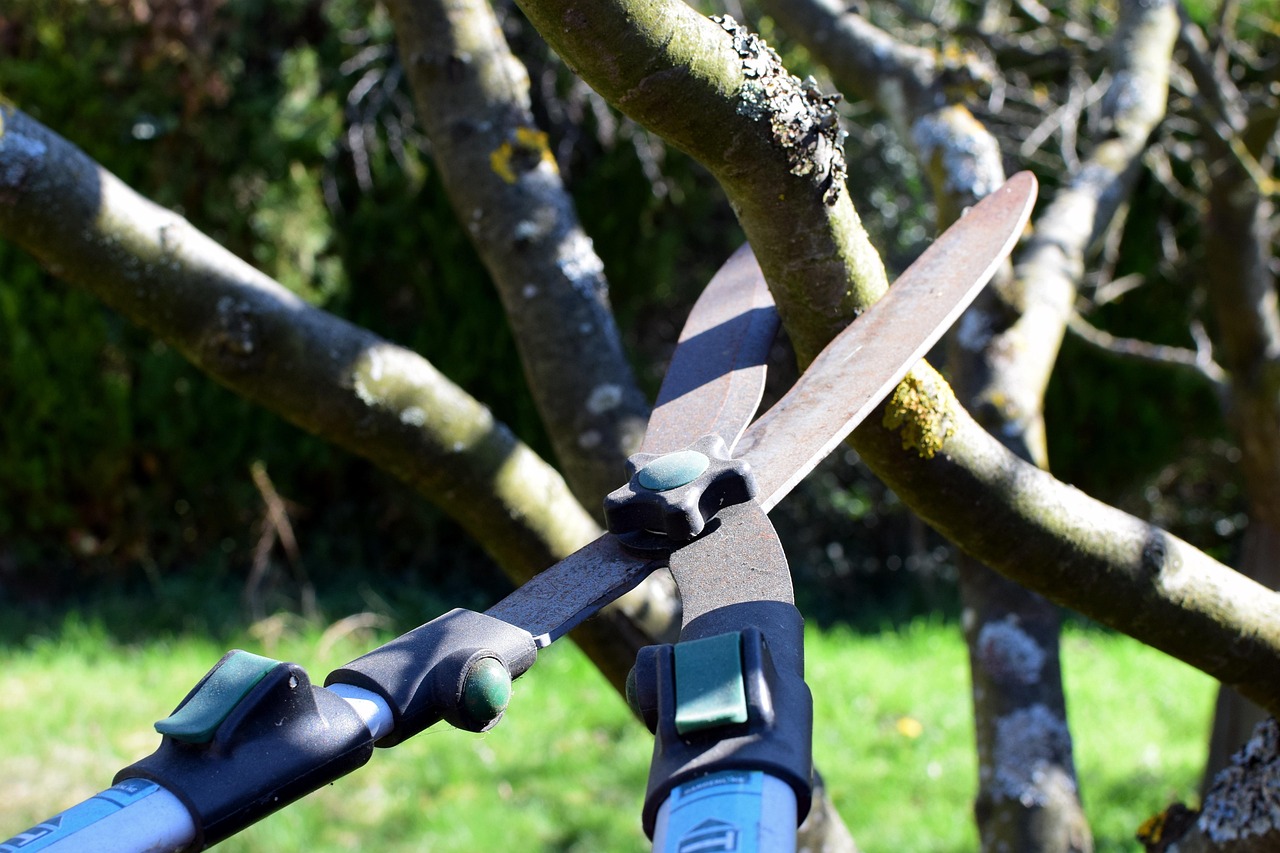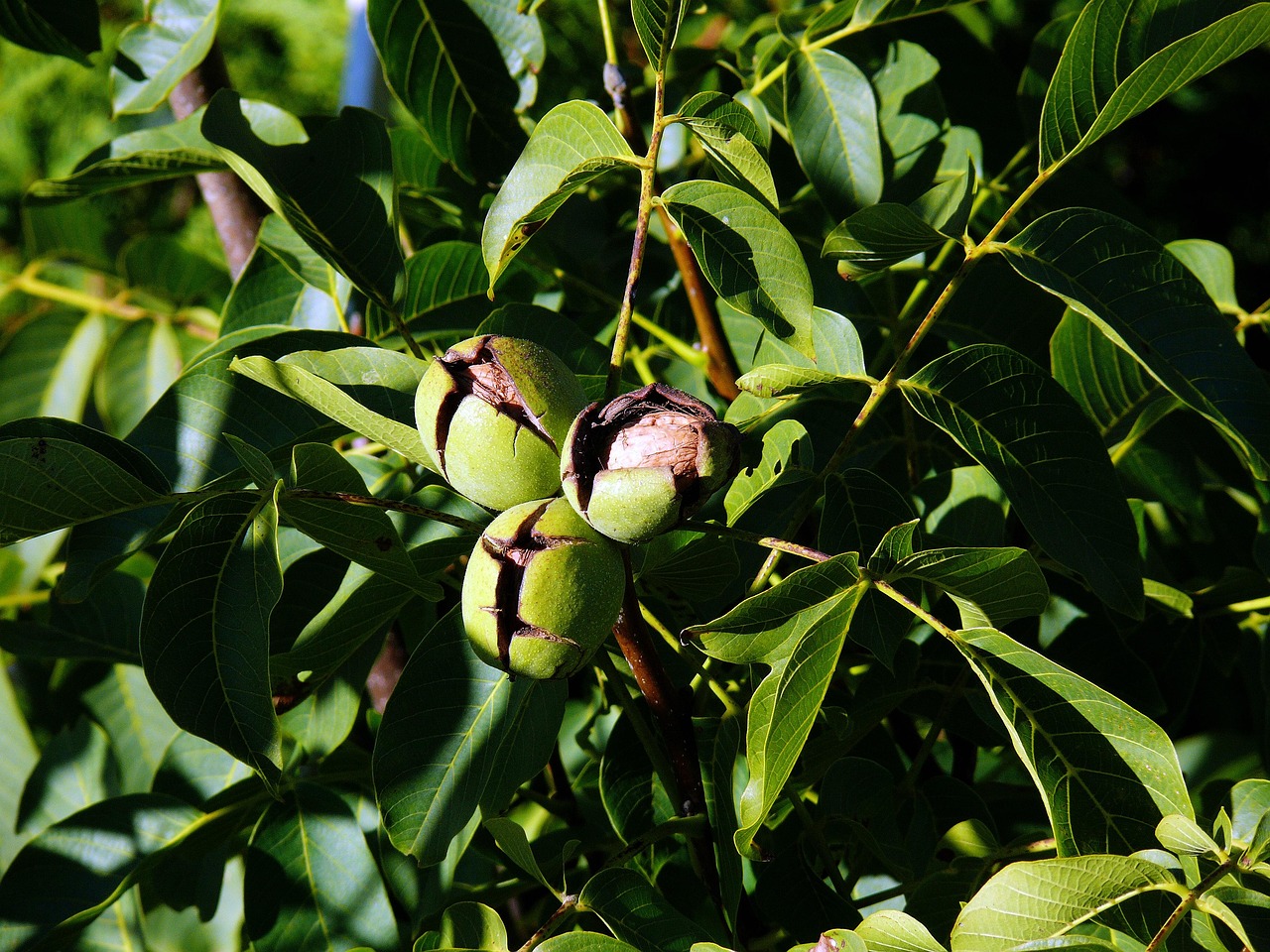Pruning walnut trees is essential for developing stronger trunks. Proper pruning techniques promote healthy growth, improve structural integrity, and enhance fruit production. Regular maintenance ensures the tree can withstand environmental stressors and supports overall vitality.
Walnut trees are known for their beautiful wood and delicious nuts. They can grow quite large, reaching heights of up to 100 feet. Homeowners and farmers alike value these trees not only for their aesthetic appeal but also for their economic benefits. However, maintaining healthy walnut trees requires knowledge and care, especially when it comes to pruning. Pruning is a critical practice that affects the tree’s growth, structure, and longevity.

One of the primary goals of pruning is to strengthen the trunk. A robust trunk is essential for supporting the tree’s weight and branches. A strong structure helps the tree endure wind, storms, and heavy fruit loads. It also allows the tree to access nutrients more efficiently from the ground. Regular pruning prevents overgrowth, which can lead to a weak structure. By removing excess branches, growers can focus the tree’s energy on developing a thicker, more resilient trunk.
Importance of Pruning Walnut Trees
Pruning offers several benefits that go beyond just trunk strengthening. Understanding these advantages can help you appreciate the necessity of this practice. Here are some key reasons why pruning walnut trees is crucial:
- Improved Air Circulation: Proper pruning removes crowded branches, promoting better airflow. Improved circulation helps reduce the risk of fungal diseases.
- Enhanced Sunlight Penetration: Thinning out branches allows sunlight to reach all parts of the tree. This encourages even growth and better fruit production.
- Increased Fruit Quality: Well-pruned trees produce larger and healthier nuts. Fewer branches mean that more energy goes into fruit development.
- Structural Strength: Strategic pruning helps create a balanced shape. This reduces the chance of breakage during storms or high winds.
Each of these factors plays a vital role in the overall health of walnut trees. However, timing and technique are crucial in achieving these benefits. Knowing when and how to prune can make a significant difference in trunk strength and tree health.

When to Prune Walnut Trees
The timing of pruning is essential for maximizing benefits. Walnut trees should be pruned during late winter or early spring when they are still dormant. This timing minimizes sap loss and reduces stress on the tree. During this period, you can easily identify the structure without leaves obstructing your view.
Pruning during active growth periods can lead to excessive sap bleeding, which may weaken the tree. Additionally, late-season pruning can expose fresh cuts to cold temperatures, potentially causing further damage. Therefore, planning your pruning schedule around these factors is essential for successful trunk strengthening.
Techniques for Effective Pruning
Understanding proper pruning techniques is vital for achieving desired results. Here are some effective methods for pruning walnut trees:

- Selective Thinning: Focus on removing specific branches rather than cutting large sections at once. This approach preserves the tree’s overall shape.
- Crown Raising: Remove lower branches to encourage upward growth. This technique helps create a strong trunk and allows better sunlight penetration.
- Heading Back: Cut back longer branches to promote bushier growth. This technique encourages side branching, leading to a more balanced tree structure.
- Wound Care: Apply tree wound dressing to larger cuts to protect against disease and pests. Smaller cuts typically do not require treatment.
By employing these techniques effectively, you can significantly improve the strength of your walnut tree’s trunk. Each method serves a purpose in ensuring that energy is directed towards strengthening the overall structure while maintaining health and productivity.
Common Mistakes to Avoid
While pruning is beneficial, several common mistakes can hinder your efforts. Being aware of these pitfalls can help you achieve better results:
- Over-Pruning: Removing too many branches at once can stress the tree and lead to poor growth.
- Poor Cuts: Making improper cuts can lead to damage and increase the risk of disease.
- Ineffective Timing: Pruning at the wrong time can weaken the tree and reduce sap flow.
Avoiding these mistakes will help ensure that your walnut tree grows strong and healthy. Proper care through effective pruning techniques lays the groundwork for a thriving tree that will provide beauty and nuts for years to come.

Tools Needed for Pruning Walnut Trees
Having the right tools is essential for effective pruning. The quality of your tools can significantly impact the health of your walnut tree. Below is a list of common tools used for pruning walnut trees, along with their specific purposes:
- Hand Pruners: Ideal for cutting small branches and making clean cuts. They are perfect for detailed work on young trees.
- Loppers: These are larger than hand pruners and are used for branches that are too thick for hand pruners. They provide more leverage and cutting power.
- Pruning Saw: Useful for larger branches that require more force to cut. A good pruning saw will allow you to make precise cuts without damaging the tree.
- Pole Pruner: This tool is designed for reaching higher branches without the need for a ladder. It typically has a saw on one end and a long handle.
- Safety Gear: Always wear gloves, eye protection, and sturdy footwear. Safety should be a priority while using sharp tools.
Using the right tools not only makes the pruning process easier, but it also ensures that you make clean cuts, which is vital for the health of your walnut tree. Damaged or ragged cuts can invite disease and pests.
Understanding Tree Growth Patterns
Before you begin pruning, it’s important to understand how walnut trees grow. Walnut trees have a distinct growth pattern that influences how and when you should prune them. Recognizing these patterns will help you make informed decisions during the pruning process.
Growth Habit
Walnut trees typically exhibit a pyramidal shape in their early years. As they mature, they develop a more rounded canopy. Understanding this growth habit allows you to maintain a balanced structure:
- Young Trees: Focus on establishing a strong central leader and remove any competing leaders to promote a single trunk.
- Mature Trees: Concentrate on thinning out crowded branches to ensure even sunlight distribution and air circulation.
Branching Structure
The branching structure of walnut trees is crucial for trunk strength. It is vital to encourage a strong branch structure that supports the overall growth of the tree. Aim for a branching pattern that distributes weight evenly:
- Main Branches: Select strong, well-spaced main branches to serve as scaffolding for the trunk.
- Lateral Branches: Prune lateral branches to prevent them from becoming too heavy and risking breakage.
Signs That Your Walnut Tree Needs Pruning
Knowing when to prune your walnut tree is as important as knowing how to prune it. Here are some signs that indicate it may be time to take action:
- Crowded Canopy: If branches are growing too closely together, they may compete for light and nutrients.
- Diseased or Damaged Branches: Any dead or diseased wood should be removed immediately to prevent the spread of disease.
- Weak Structure: If you notice branches that appear weak or are prone to breaking, they may need to be pruned back.
- Pest Infestation: If certain areas of the tree are infested with pests, removing affected branches can help control the problem.
Addressing these issues promptly can help maintain the health and strength of your walnut tree. Regular inspections throughout the growing season can help you identify these signs early.
Post-Pruning Care
After pruning, providing appropriate care is essential to help your walnut tree recover and thrive. Here are some essential steps to follow after pruning:
- Watering: Ensure that your tree receives adequate water following pruning. This helps reduce stress and promotes healing.
- Nutrient Management: Consider applying a balanced fertilizer to support new growth. Make sure it’s appropriate for walnut trees.
- Pest Monitoring: Keep an eye out for any signs of pests or disease in the weeks following pruning. Early detection is crucial.
- Avoid Further Stress: Minimize additional stressors like heavy foot traffic around the tree during its recovery period.
Caring for your walnut tree after pruning is just as important as the pruning process itself. Taking these steps will help ensure that your tree remains healthy and robust, ready to withstand environmental challenges.
Long-Term Maintenance Practices
Maintaining the health and strength of your walnut tree involves ongoing care beyond initial pruning efforts. Here are some long-term maintenance practices to consider:
- Regular Inspections: Conduct annual inspections to assess tree health, identify pests, and evaluate growth patterns.
- Seasonal Pruning: Consider light pruning during summer months to maintain shape and remove any unwanted growth that may appear.
- Mulching: Apply mulch around the base of the tree to conserve moisture and suppress weeds.
- Irrigation Management: Monitor soil moisture levels regularly, especially during dry spells, to ensure consistent watering practices.
By following these long-term maintenance practices, you can ensure that your walnut tree continues to grow healthily and develops a strong trunk capable of supporting its weight and producing high-quality nuts.
Understanding Walnut Tree Diseases and Pests
Maintaining the health of your walnut tree is crucial for its growth and strength. However, walnut trees are susceptible to various diseases and pests that can affect their vitality. Recognizing these threats early can help you take appropriate action to protect your tree.
Common Diseases
Several diseases can impact walnut trees, leading to weakened trunks or reduced nut production. Here are some common diseases to watch for:
- Walnut Canker: This fungal disease leads to sunken areas on the bark and can eventually girdle branches, causing dieback.
- Powdery Mildew: A fungal infection that appears as a white powdery coating on leaves. It can hinder photosynthesis and weaken the tree.
- Root Rot: Caused by overwatering or poorly drained soil, root rot can lead to tree decline. Symptoms include yellowing leaves and stunted growth.
- Leaf Blight: This disease causes dark spots on leaves, which may lead to premature leaf drop, impacting the tree’s energy reserves.
Monitoring your walnut tree for symptoms of these diseases is critical. Prompt action, such as removing infected branches or applying appropriate fungicides, can help mitigate damage.
Pest Infestations
Pests can also pose a significant threat to walnut trees. Here are some common pests that may invade your tree:
- Walnut Husk Fly: This pest lays eggs in the husks of developing nuts, causing them to rot and drop prematurely.
- Leafcutter Bees: While they do not harm the tree directly, they may cut circular holes in leaves, reducing the tree’s ability to photosynthesize.
- Walnut Twig Beetle: This small beetle can bore into branches and create holes, weakening the structure and making it susceptible to disease.
- Aphids: These small insects suck sap from leaves, leading to stunted growth and potentially transmitting diseases.
Regular inspections can help detect these pests early. If an infestation occurs, consider using organic or chemical treatments as appropriate for your situation.
Fertilization for Healthy Growth
Proper fertilization is essential for ensuring that your walnut tree has the necessary nutrients for strong trunk development and overall health. Here are some key points to consider when fertilizing your walnut tree:
Nutrient Requirements
Walnut trees typically require a balanced supply of nutrients, including nitrogen, phosphorus, and potassium. Here’s a breakdown of their requirements:
| Nutrient | Function |
|---|---|
| Nitrogen | Promotes healthy leaf and shoot growth. |
| Phosphorus | Supports root development and flowering. |
| Potassium | Aids in water regulation and disease resistance. |
A soil test can help determine the specific nutrient needs of your walnut tree. Based on the results, you can select the appropriate fertilizer type and application rate.
Application Techniques
When applying fertilizer, consider the following techniques for optimal results:
- Timing: Fertilize in early spring before new growth begins. This timing aligns nutrient availability with the tree’s active growth period.
- Method: Apply granular fertilizers evenly around the root zone but avoid direct contact with the trunk to prevent burn.
- Watering: Water the tree thoroughly after applying fertilizer to help nutrients penetrate the soil and reach the roots.
Proper fertilization not only supports trunk strength but also enhances the overall resilience of your walnut tree against pests and diseases.
Environmental Factors Affecting Growth
The environment plays a significant role in the health of walnut trees. Understanding these factors can help you create an optimal growing environment:
Soil Conditions
The type of soil in which your walnut tree is planted affects its growth. Walnut trees prefer well-drained loamy soils with good organic matter content. Monitor soil pH levels; walnut trees thrive in slightly acidic to neutral soils (pH 6.0 to 7.0).
Sunlight Requirements
Walnut trees require full sun for optimal growth. Ensure that your tree receives at least six hours of direct sunlight daily. Insufficient light can stunt growth and weaken trunk strength.
Watering Practices
Adequate watering is crucial for walnut trees, especially during dry spells. Young trees require consistent moisture to establish a strong root system. Here are some tips for effective watering:
- Deep Watering: Water deeply but infrequently to encourage deep root growth.
- Avoid Overwatering: Ensure proper drainage to prevent root rot and other diseases associated with excess moisture.
By addressing these environmental conditions, you can create a supportive habitat that promotes healthy growth and a strong trunk for your walnut tree.
Advanced Pruning Techniques
In addition to the basic pruning techniques discussed earlier, there are advanced methods that can further enhance trunk strength and overall tree health. These techniques can be particularly useful for experienced growers looking to optimize their walnut trees.
Crown Reduction
Crown reduction involves selectively removing branches from the upper part of the tree. This technique reduces the height of the tree while maintaining its overall shape. Crown reduction can help:
- Improve Light Penetration: By reducing the crown, lower branches receive more sunlight, enhancing photosynthesis.
- Minimize Wind Resistance: A lower profile can help the tree withstand strong winds, reducing the risk of breakage.
- Encourage Stronger Growth: Redirecting energy from top growth to lower branches can promote a thicker trunk and a stronger structure.
Espalier Techniques
Espaliering is a method where the tree is trained to grow flat against a structure, such as a wall or trellis. This technique is particularly popular in smaller gardens, as it maximizes space and allows for easier access. Benefits include:
- Space Efficiency: Espaliered trees take up less ground space while providing visual interest.
- Improved Airflow: Spreading branches out allows better air circulation, reducing the risk of disease.
- Enhanced Aesthetic Appeal: An espaliered walnut tree can serve as a unique focal point in your garden.
Environmental Impact and Sustainability
Walnut trees play an essential role in their ecosystems. As you maintain and prune your walnut trees, it’s vital to consider their environmental impact:
- Ecosystem Benefits: Walnut trees provide habitat and food for various wildlife species. They also contribute to soil health by preventing erosion.
- Sustainable Practices: Incorporating organic practices in your pruning and maintenance routines can reduce chemical runoff and promote biodiversity.
- Carbon Sequestration: Like all trees, walnut trees absorb carbon dioxide, helping mitigate climate change effects.
By adopting sustainable practices, you ensure that your walnut tree management contributes positively to the environment while also benefiting your garden or orchard.
Community and Knowledge Sharing
The cultivation of walnut trees can foster community and knowledge sharing among growers. Participating in local gardening clubs or online forums can provide valuable insights and support. Consider these options:
- Join Local Gardening Groups: Engage with fellow walnut tree growers to exchange tips on pruning techniques, pest management, and more.
- Attend Workshops: Many agricultural extension services offer workshops or seminars on tree care and maintenance.
- Utilize Online Resources: Websites, blogs, and social media platforms can provide a wealth of information on best practices.
Cultivating a network of support not only enhances your knowledge but also enriches your experience as a walnut tree grower.
Final Thoughts
Pruning walnut trees for stronger trunks is a multifaceted process that requires knowledge, skill, and ongoing care. From understanding the importance of timing and technique to recognizing environmental factors that influence growth, each aspect plays a crucial role in the health of your tree. Utilizing proper tools, recognizing signs of disease and pests, and providing adequate nutrition furthers your efforts in cultivating robust walnut trees.
As you implement these strategies, remember that patience is key. Trees take time to develop strength and health. With consistent care and attention, your walnut tree will thrive, providing not only beautiful wood but also delicious nuts for years to come.
The journey of nurturing a walnut tree is rewarding and enriching. Embrace the learning process, engage with your local community, and enjoy the fruits of your labor—both literally and figuratively. By following best practices in pruning and maintenance, you are setting the stage for a resilient walnut tree that can withstand challenges and flourish in your landscape.
